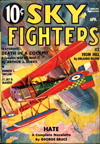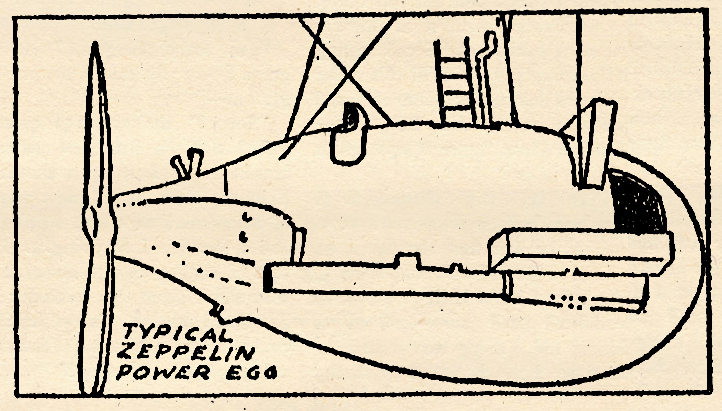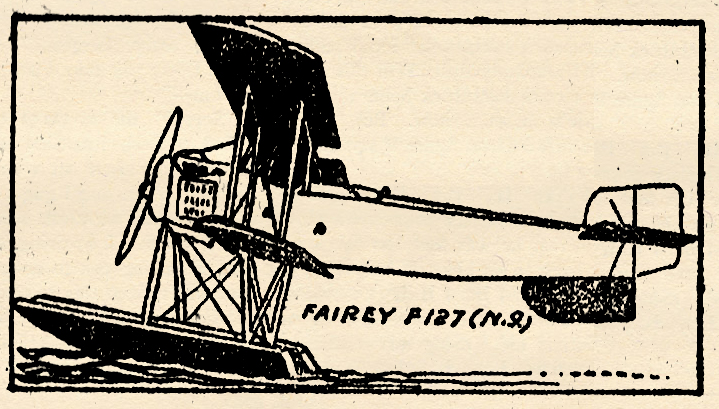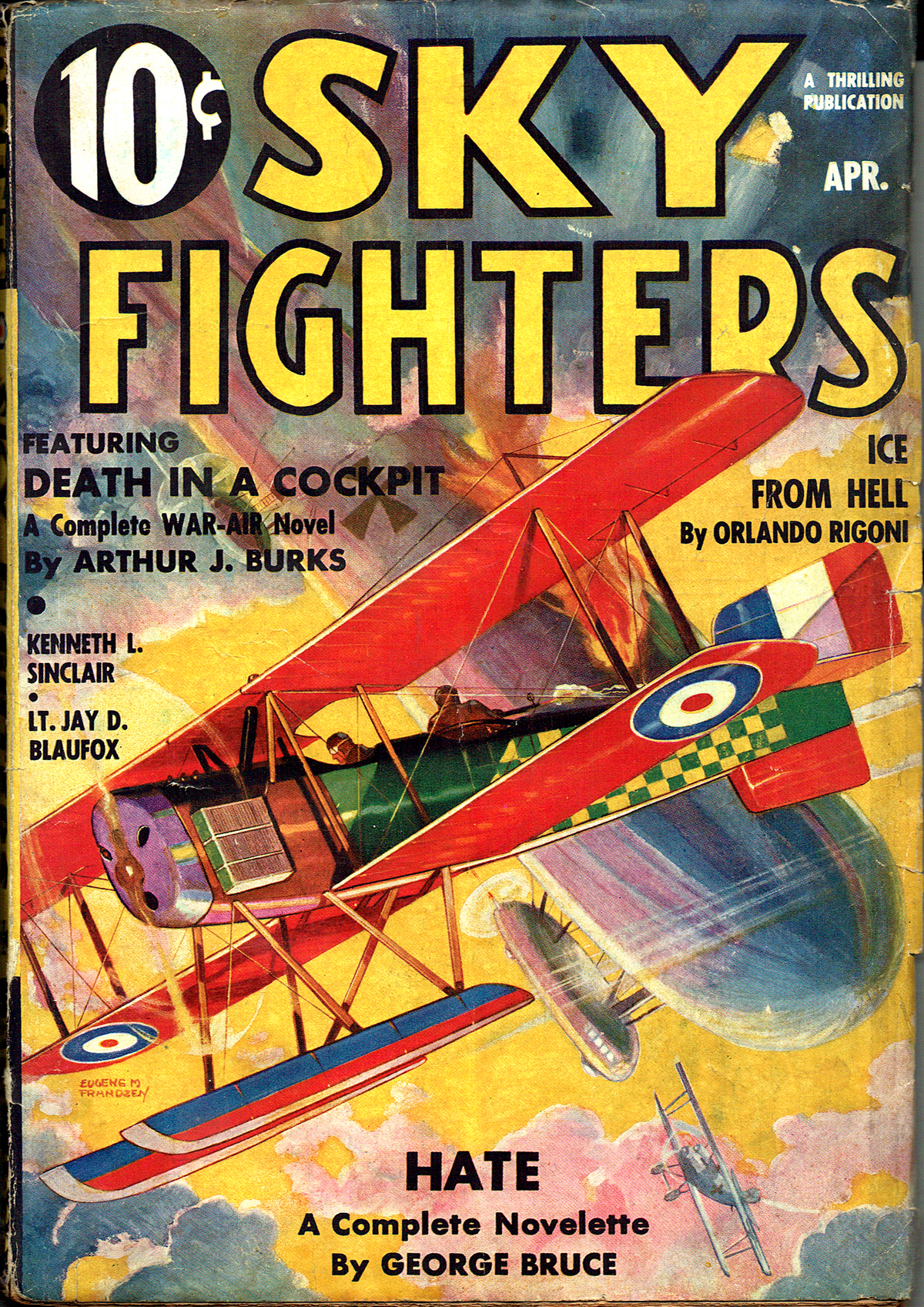“Sky Fighters, April 1936″ by Eugene M. Frandzen
Eugene M. Frandzen painted the covers of Sky Fighters from its first issue in 1932 until he moved on from the pulps in 1939. At this point in the run, the covers were about the planes featured on the cover more than the story depicted. Mr. Frandzen features Fairey F127 Seaplane making an escape after an attack on a giant Zeppelin on the April 1936 cover!
The Ships on the Cover
GOTHA and Friedrichshafen  bombers of World War time ventured forth on daylight raids over England. They swooped down on the great cities dropping every conceivable type of bomb. But the slow-moving Zeppelins chose night as their time for harassing the enemy. Flying at tremendous heights with muffled engines they were often directly over their predetermined target before the defenders were aware of their presence.
bombers of World War time ventured forth on daylight raids over England. They swooped down on the great cities dropping every conceivable type of bomb. But the slow-moving Zeppelins chose night as their time for harassing the enemy. Flying at tremendous heights with muffled engines they were often directly over their predetermined target before the defenders were aware of their presence.
Count von Zeppelin didn’t let size or weight bother him. There was fifty tons to be lifted into the air when the ship was fully loaded. The crew of twenty-two men could scramble through the big bag on a narrow catwalk running along the keel from one gondola to the others.
Aside from the navigation of the Zep they had to man nine machine-guns and release their cargo of about sixty bombs. Two of the machine-guns were mounted on top of the Zep in a small fenced platform. Her metal lattice work girder formation held twenty-four ballonets filled with inflammable hydrogen gas, within the framework. The big bag was around 650 feet long and 72 feet in diameter at its widest point.
Above London
The Zeppelin pictured on the cover nosed its way through the clouds of night towards the English Channel. Below faint splotches of flame marked the muzzles of roaring Allied cannon. Higher and higher climbed the air monster; Maybach engines pushed her toward her goal at around 50 m.p.h. Altitude was about 15,000 feet as she neared the Channel.

“Higher” ordered her commanding officer as the clouds disappeared and clear starlit skies opened ahead. The three men directly behind him glanced at each other with apprehension. Already the thermometer had dropped below freezing. It was going down fast. The great bag’s nose continued to point upward. The thermometer slid lower. Below zero. Hands froze at the control wheels. They were above London.
Bomb after bomb screamed down on the sleeping city, flames broke out, airplane motors roared as they lifted defense planes into the sky. Not a sign of the Zeppelin could they find. Altitude had again done the trick, and with dawn breaking in the east they pictured the high flying raider far back toward its home base.
The siren’s “All’s well” signal echoed through the darkened streets of London. The air raid was over. Householders could once more return to their broken slumbers. Those who had not perished.
But the Zeppelin was wallowing uncontrollable over the North Sea with a crew of men and officers nearly frozen to death. Control wires coated with ice from the morning mists, water ballast frozen in tanks. Even the engine radiators, although raised into cars, were frozen, and the motors were very nearly useless. Gradually the giant bag was settling.
The North Sea Patrol
Patroling the North Sea were the R.N.A.S. seaplanes. One of these, a Fairey F127 N9 was the first seaplane to begin flight by being catapulted from a warship. It was a big plane with a 50 foot span. The top plane had a large overhang. The machine had a 190 h.p. Rolls-Royce engine but these power plants were in such great demand for other planes that the N9 could not be put into quantity production. The original N9 was in service until a few months before the Armistice.

A surprised observer in the British Fairey seaplane rubbed his eyes and pounded his pilot on the back. Up shot the pontooned patrol boat. A nearly stationary Zeppelin hovering directly over the Channel in broad daylight was unbelievable. They soon realized it was the real thing as a barrage of machine-gun fire greeted their approach. A sharp bank brought the seaplane’s tail around. Lewis slugs streamed into the gut-covered ballonets. The great bulk of the raider shuddered as the first explosion racked her ribs.
Fire wrapped the envelope in clutching tentacles, ate into the canvas-covered sides of the control car and slashed at the three men and their commanding officer still fighting their controls. The fire engulfed the Zeppelin crew, just as flames had engulfed scores of non-combatants in London homes a few hours before.

Sky Fighters, April 1936 by Eugene M. Frandzen
(The Ships on The Cover Page)




